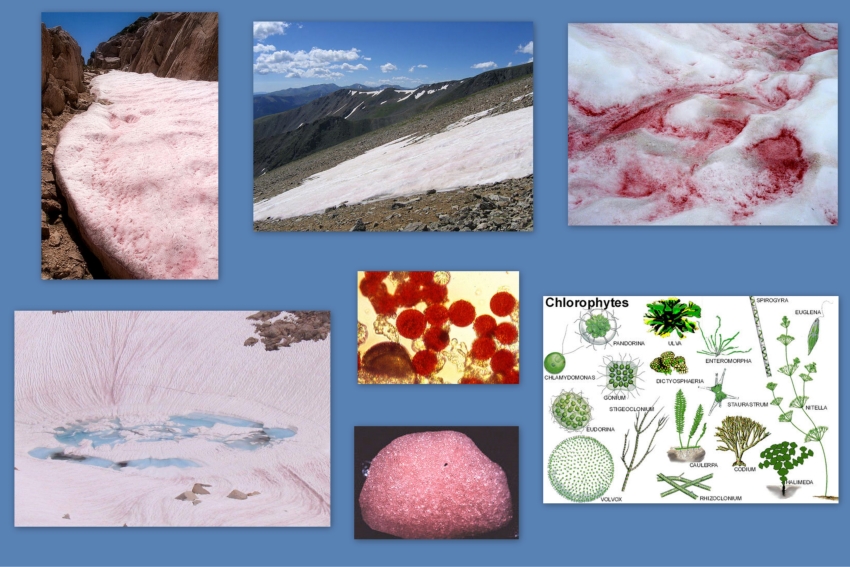

The Yellow Gazette, Vol.2 No.4 June 2011
ChlorophytesTerrestrial plants are believed to have evolved from the chlorophytes, such as the green algae. Their survival on land demanded special adaptations to prevent them from drying out and to aid them in obtaining nutrients and in reproducing. The evolution of cutin, which forms a waxy layer on plants (the cuticle), and stomata helped to prevent desiccation, the development of roots and supporting structures. Diagnostic Characters of the Green Algae.
One of the more interesting displays 
Watermelon snow People have been noticing watermelon snow for thousands of years. The Ancient Greeks, for example, puzzled over the phenomenon, who concluded that the strange red color was the blood of the Titans. To touch it was only for those who dared to test the gods. Later it was used by healers to purge the body of toxin ( or to remove a curse). No, It Doesn't Taste Like Watermelon At some point or another, we have all probably been cautioned against consuming tainted (ahem, yellow) snow. It may be pretty, but it's not tasty. Apparently, though, snow can take on other unexpected hues as well. In some snowy mountain regions, there have been reports of people sampling bites from patches of neon pink snow that they happen upon during hikes. These spots are commonly referred to as "watermelon snow." Apparently, it does not taste like watermelon, and has very nasty gastrointestinal side effects. What is even more fascinating than the mere existence of pink snow is that it is caused by a green algae, most commonly Chlamydomonas nivalis. So how does a green algae turn white snow pink? The algae are tiny, single-celled organisms that lie dormant during the winter months. When spring arrives, they germinate, which means that the dormant cells activate and release small, mobile green cells capable of propelling themselves through the snow with their flagella. These little guys make their living near the surface of the snow layer, consuming organic matter such as dead leaves. Living near the crust of the snow pack at high altitudes means that C. nivalis cells are exposed to intense UV radiation. The higher the altitude, the less atmosphere to filter mutation-inducing UV. To protect themselves from harmful rays, C. nivalis secretes a mucosal substance as a kind of home-made sunscreen. This goo contains a red carotenoid, astaxanthin, in addition to the typical green chlorophyll found in most algae. (Interestingly, astaxanthin is the same pigment found in crustaceans, which provides flamingos with their brilliant plumage coloration). So the pink color results from the algae's endogenous UV protection mechanism, as the secretions leach into the surrounding snow and stain it a brilliant pink/red color. Apparently the pigment is so strong that it can stain your hands and hiking boots if you decide to play around in it. In the high mountain ranges of the western United States at least 60 different species of snow algae have been identified, but only a few kinds have been reported from the Sierra Nevada. One of the most common species of snow algae in California, and the one responsible for pink snow, is Chlamydomonas nivalis. |
|
 |
|
 |
 |
| Peony | Bush |
|---|---|
 |
 |
| Blue flowers | Lush tropical plant |
If you have any plants you would like donate to Little Nellie for use in Yellow (or elsewhere), you can send them to yellowgazette@cox.net Send all questions or comments to yellowgazette@cox.net. | |